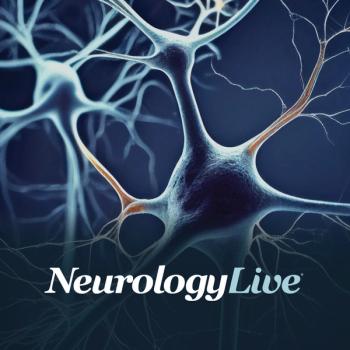
Overviewing 2025 Baptist Health Brain and Spine Symposium: Exploring New Options in Chronic Pain Management

Key Takeaways
- Interventional pain management is expanding with minimally invasive techniques, offering alternatives for patients who are not surgical candidates.
- Emerging techniques include percutaneous procedures, spinal cord stimulators, and peripheral nerve stimulation, providing less invasive options for pain relief.
Seif Elbualy, MD, discusses his role at the Brain and Spine Symposium and shares insights on the future of interventional pain management, evolving techniques, and pharmaceutical innovation.
The Marcus Neuroscience Institute Brain and Spine Symposium is a 2-day academic event, held May 15-16, designed to assist attendees in expanding their knowledge of the latest advances in the field of neuroscience through didactic lectures, interactive panel discussions, and case-based presentations. This educational event, accredited by the Accreditation Council for Continuing Medical Education, will include various specialties, neurosurgeons, experts in robotic spine surgery, and behavioral medical professionals in the region.
Ahead of the Marcus Neuroscience Institute’s Brain and Spine Symposium, Seif Elbualy, MD, highlights the expanding role of interventional pain management and the importance of personalized, non-surgical treatment options. Elbualy, director of pain management, discussed how newer, minimally invasive approaches—such as percutaneous discectomies, nerve stimulation, and spinal fusion devices—are reshaping care for patients who are not surgical candidates. Elbualy, who will present a talk at the symposium, spoke on how pain management will evolve going forward, the potential for combination approaches, and the most pressing unanswered questions the pain community is currently trying to answer.
NeurologyLive: What is your role within the Brain and Spine Symposium?
Seif Elbualy, MD: We're never entirely sure who will be attending in terms of educational background—some years we have mostly physicians, others include a lot of advanced practice providers. Most neurologists and neurosurgeons are familiar with standard interventional pain management techniques like steroid injections or joint ablations. These are the more routine spine interventions.
But the field has evolved significantly in the last 5 to 10 years. We’re seeing a real explosion of interventional techniques that go beyond traditional injections—moving into minimally invasive surgical procedures. I think many clinicians may not be aware of all the available options, particularly for patients who are not surgical candidates—either because they’re medically high-risk or they simply don’t want surgery. These emerging tools give us valuable alternatives.
How difficult is it to manage the numerous types of pain seen in clinical practice?
There are many kinds of pain, and they behave differently. Nerve pain, for example, is often more difficult to manage with interventional techniques, compared to structural pain caused by abnormalities like herniated discs or spinal stenosis.
Surgeons tend to focus on fixing structural causes, such as relieving nerve compression. In contrast, when you’re dealing with neuropathic or post-injury nerve pain, it’s often more about management than cure. So different specialties—pain management, neurology, neurosurgery—each have a role to play, depending on the underlying mechanism of pain.
What factors guide the decision to escalate a pain case toward surgery?
It’s always a risk-benefit calculation. I’d say 99% of the patients I see don’t want surgery. To them, surgery means general anesthesia, operating rooms, and major incisions. Even if we perform something with a small incision, if it’s done under local anesthesia and doesn’t require an OR, they don’t view it as "real surgery."
In general, we try to exhaust all minimally invasive options first. Only when there’s no reasonable alternative—when nothing else has worked and the patient's quality of life is severely impacted—do we send them to a surgeon. That’s not to say we steer people away from surgery, but it has to be the right fit.
You mentioned emerging techniques—can you share more details for a clinical audience?
From an interventional perspective, we now have a variety of percutaneous procedures and devices. Traditional spinal cord stimulation still exists, but we’re also seeing newer generations of spinal cord stimulators and peripheral nerve stimulation options, which don’t directly target the spinal cord but rather specific peripheral nerves.
We also have percutaneous fusion devices, discectomies, and foraminotomies—all designed to be done in the least invasive manner possible. In some patients, these procedures are “good enough” to relieve symptoms and help avoid larger surgical operations.
I’ll be honest: some in the surgical world may see this as pain management stepping into their territory. But when approached thoughtfully, these alternatives make sense for many patients—particularly those at higher risk or those trying to avoid major surgery.
How do you see pain management evolving over the next few years?
As long as there’s financial investment in it, pharmaceutical innovation will continue. We recently saw a new pain medication—I believe the brand was Stretchgene—that’s indicated for acute pain. It’s taken years to develop, and while its indications are limited, it reflects a broader push toward non-opioid, non-addictive pain medications that target specific pain receptors without triggering dependency pathways.
If these types of drugs fulfill their promise, they’ll revolutionize pharmacologic pain therapy, the same way weight loss medications recently changed metabolic disease management. Whether that happens during my career remains to be seen, but it’s certainly coming.
Are combination approaches being used more frequently in pain management?
Absolutely. Most chronic pain patients are already receiving multimodal care. They might be on neuromodulatory medications, receive interventional procedures, and also be evaluated for surgical or infusion therapies. It's rare to see someone on just one medication or treatment approach anymore. The field has embraced combination therapy out of necessity.
What are some unanswered questions in chronic pain research?
There’s still a lot we don’t understand about pain pathways. How pain is transmitted through the spinal cord, how spinal cord stimulation works—these are still partially theoretical. There are multiple hypotheses, but no consensus on the exact mechanisms.
In my view, the biggest breakthrough will come when we develop effective, non-addictive pain medications with minimal side effects. That would change everything. And innovation is already happening—not just in pharmaceuticals, but in interventional techniques as well. This country leads the way in medical research because innovation is rewarded. That benefits not just U.S. patients, but people around the world.
Transcript edited for clarity.
Newsletter
Keep your finger on the pulse of neurology—subscribe to NeurologyLive for expert interviews, new data, and breakthrough treatment updates.


































